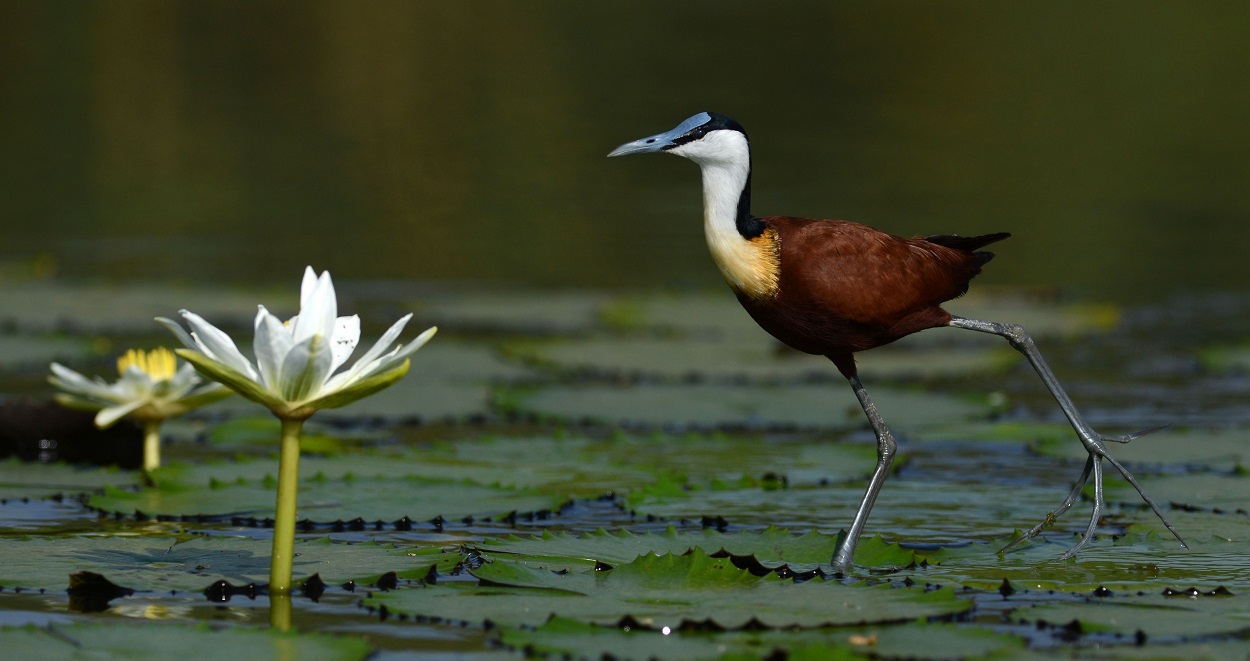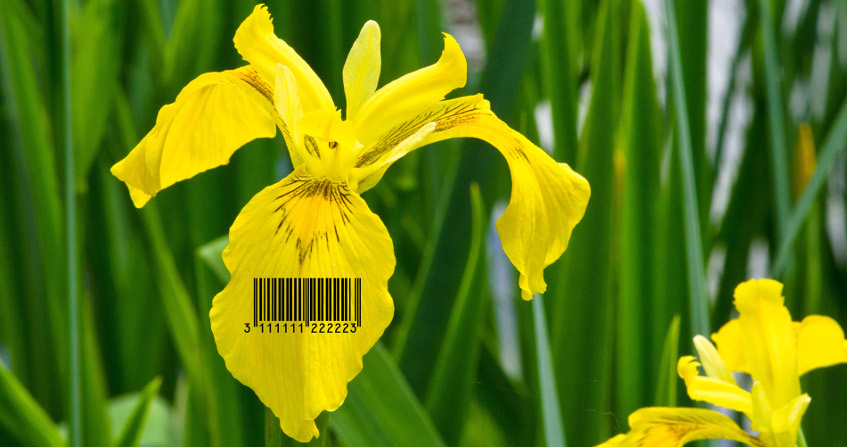生物多样性不是奢侈品,而是必需品
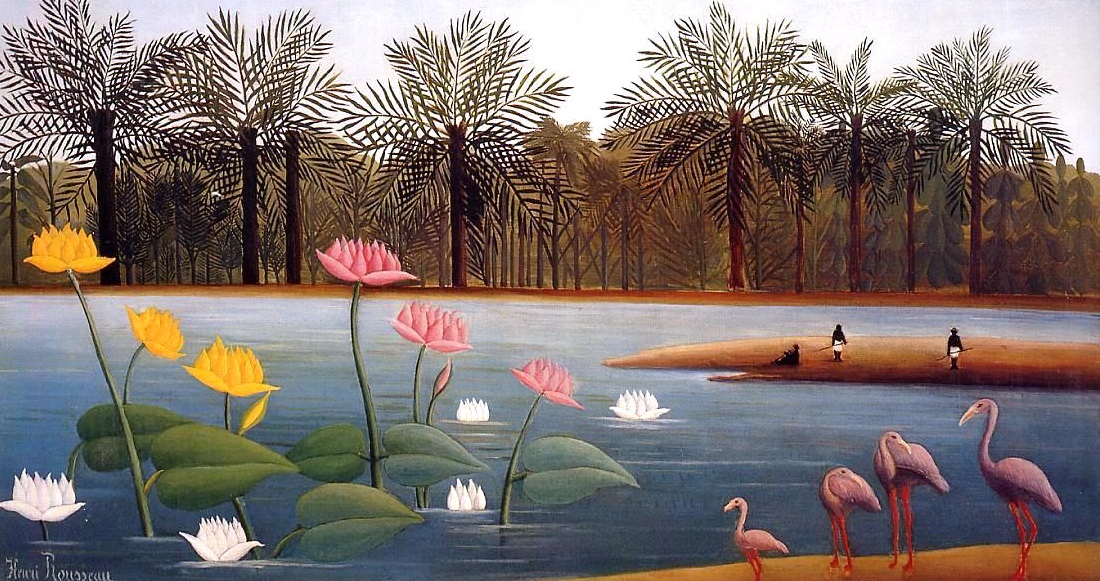
生物多样性(biodiversity)是英文中“生物的”(biological)和“多样性”(diversity)的合成词,在1992年举办的“地球峰会”上首次出现在公众领域。这个词有两种含义:在生命科学领域,关注其生物组成;在人文和社会科学领域,关注社会对其管理以及内在价值的思考。生态系统功能和服务的概念确立后,在物种生物学与社会福祉之间建立动态联系成为可能。结合“全球变化”一词,导致生物多样性丧失的几个因素对社会福祉带来严重风险,新的生态治理形式应减轻此类风险。
1. 什么是生物多样性?
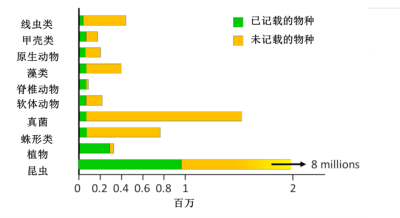
Described species 已被描述物种
Undescribed species 未被描述物种
Nematodes 线虫
Crustacean 甲壳动物
Protozoan 原生动物
Algae 藻类
Vertebrates 脊椎动物
Molluscs 软体动物
Fungi 真菌类
Arachnids 蛛形纲动物
Plants 植物
Insects 昆虫
“生物多样性”一词于1986年在美国举行的生物多样性论坛上首次提出,当时科学界意识到全球生物多样性正在减少,这一现象令人担忧。但是,直到1992年6月联合国召开环境与发展会议,即里约热内卢地球峰会,“生物多样性”一词才被公众和媒体熟知。它最初被定义为生态系统、物种(图1)和基因在空间和时间上的多样性,以及它们在这些结构层级内部和之间的相互作用,后来被广泛应用于各个领域,因此很难再为其找到一个能被广泛接受的正式且简单的定义。
实际上,“生物多样性”一词有两个互补的含义。
- 第一个是将生物多样性视为一个实体层级结构(基因、个体、种群、物种、生态系统),作为永久进化(时间维度)的交互系统,受动态(空间维度)驱动并发挥功能。该定义反映了三个基本概念,即生物多样性要素之间的相互作用、它们在空间中的动态(即生态)和它们的时间轨迹(即进化)(见《什么是生物多样性?》)。
- 第二个是将生物多样性视为一种社会、经济、法律、政治和哲学结构,其面临的挑战与和人类社会的互动有关:人类从生物多样性获取资源、利用资源、受益于其资源、共享并管理生物多样性、维系生物多样性的可持续性。
因此,从实际层面来看,生物多样性是一个科学界的优先事项,需要通过了解其起源、进化、组织和在生态系统中的功能,竭尽所能阻止其受到侵蚀。这就是生命科学界正在做的事情。但这也是一个经济和社会问题,因为它所代表的生物和遗传资源必须在个人和国家层面得到重视和公平共享。最后,这是一个伦理问题,因为它引发了物种生命权的问题,环境伦理等几个活跃的哲学思潮认为,这不受法令约束也不可剥夺。
环境伦理学质疑以西方人类中心主义制定物种和自然系统的开发和管理标准是否合理。根据非人类中心主义的观点,每个生物都是“目的论的生命中心”,因此必须将其本身视为目的,这是使其成为道德考量对象并承认其内在价值的必要和充分条件。正是在这种背景下,几个立场之间出现了哲学上的分歧,特别是在“生物中心主义”和“生态中心主义”之间,前者在个体层面上捍卫生命、每一种生命体,而后者倡导生物群落的完整性,即一个包括所有其组成的有机体(包括人类)的复杂生态系统。生态中心主义是目前思考人类社会与自然系统之间关系的首选方案。
因此,生物多样性显然也属于人文和社会科学的一部分。
2. 功能、服务和价值
经过了长期的割裂,目前生物多样性研究倾向于整合生态系统功能和生态系统服务,尤其是在联合国倡议下为《生物多样性公约》(CBD)进行千年生态系统评估之后。该国际条约于1992年在里约热内卢举行的地球峰会通过,旨在(i)保护生物多样性,(ii)确保其组成部分的可持续利用,以及(iii)公平和公正地共享使用遗传资源所产生的惠益。《生物多样性公约》是可持续发展的重要文件,其中生物多样性被列为一个关键性问题。自2012年以来,由联合国环境规划署(UNEP)发起的政府间生物多样性和生态系统服务平台(IPBES)召集了一个专家小组,类似于联合国政府间气候变化专门委员会(IPCC)。
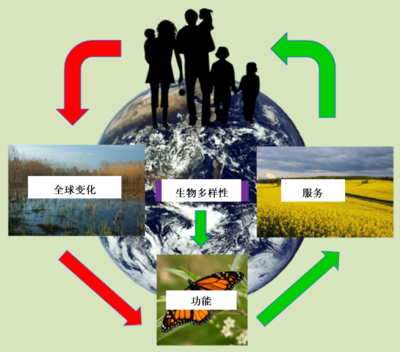
global changes 全球变化
biodiversity 生物多样性
services 生态系统服务
functions 生态系统功能
生物多样性与人类社会之间关系的逻辑基于生态系统功能和服务的概念(图2):生态系统功能是支持生态系统的基本过程,例如授粉、初级生产力、营养级之间的关系(食物链)、有机物质循环、种群调节等。生态系统服务是人类从这些功能中获得的好处,即衣食住行、健康等所需的一切,还包括许多其他服务,如气候调节、水净化、碳封存、病原体控制等等。当生态系统承受的压力过大时,会随物种的丧失、相互作用中断而退化,导致功能的改变和服务的匮乏。如今,生物多样性的丧失是全球各地普遍面临的一个重大问题。物种以人类历史上罕见的速度消失,令人痛惜,但最令人担忧、最可怕的影响是空间碎片化、基因贫瘠化(genetic impoverishment)和在景观层面本地种群的消失,这是一种对生命结构的磨损,影响了生态系统的功能。
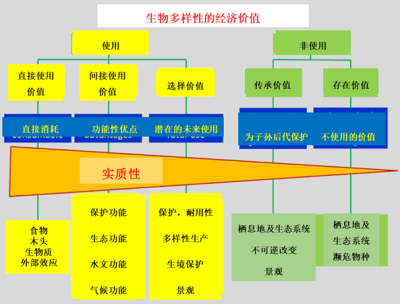
Economic Value of biodiversity 生物多样性的经济价值
Use 使用价值
Value of direct use 直接使用价值
Value of indirect use 间接使用价值
Value of option 可选价值
directly consumable 直接消耗
functional advantages 功能优势
potential future use 潜在的未来用途
food 食物
wood 木材
biomass 生物量
externalities 外部效应
protection functions 保护功能
ecological functions 生态功能
hydrologic functions 水文功能
climatic functions 气候功能
conservation 生态保护
durability 持久性
diversity production 多样性生产
habitats conservation 生境保护
landscapes 景观
Non-use 非使用价值
inheritance value 继承价值
existence value 存在价值
conservation for the future generations 保护后代
valeurs placees sur le non-usage 非使用价值
habitats & ecosystems 生境和生态系统
irreversible changes 不可逆变化
landscapes 景观
habitats & ecosystems 生境和生态系统
endangered species 濒危物种
tangibility 有形性
根据生物多样性的服务和资源的概念,同时也为了保护生物多样性,经济界掌握了这一概念并赋予了不同层次的价值,这具有一定难度,因为“价值”一词的不同含义可能导致相互矛盾的做法(图3)。当人类通过金融交易赋予生物多样性实体货币价值时,这个价值与人类认可生物多样性作为独特生命实体的价值没有关系。
3. 全球变化及生物多样性
“全球变化”一词是指对生态系统产生过度压力导致的所有退化因素,这种压力已经成为“人类世”一词的由来,该词语以人类足迹为标志的一个新的地质时代,其影响遍及全球。全球变化分为六个主要部分:(i)生境改变和破碎化,(ii)污染(各种形式),(iii)化学投入(农药、化肥),(iv)入侵物种(包括转基因生物),(v)资源过度开发,以及(vi)气候变化。这些压力导致的生物多样性丧失难以估计,但可以通过几个指标评估。我们正在谈论的这种生物多样性丧失是第六次大灭绝危机,其他五次从泥盆纪(距今3.7亿年前)一直蔓延到白垩纪末期(距今6500万年)。后者导致了恐龙的灭绝,但促进了鸟类和哺乳动物的发展。
由于许多现已众所周知的原因,人类社会的福祉取决于他们能否融入生态系统且生态系仍能发挥功能,这需要制定新的、更有利于环境的管理标准。保护科学有助于确定这些标准,并为制定有效的空间和物种管理政策提供必要的专业知识。在制度层面,欧盟正在采取或已经采取许多措施,例如1992年栖地指令(Habitats Directive),自然保护区网络(Natura 2000)和2009年鸟类指令(Birds Directive)。法国也通过多项举措致力于保护生物多样性,特别是通过1976年的自然保护法以及在格勒诺布尔环境会议后的立法。2007年,法国启动了一个蓝绿基础设施项目。最近,随着《重新征服生物多样性、自然和景观法》(,Law for the Reconquest of Biodiversity, Nature and Landscapes(2016年)的颁布,法国生物多样性局也成立了,这是一个关于生物多样性的专业知识和管理机构,将有助于国家生物多样性战略的实施。另一个有效的研究和专业知识机构是法国生物多样性基金会。希望所有这些措施都将取得成果,但目前确实进展有限,除个别地方外,趋势指标仍未显示世界范围内的生物多样性状况得到改善。
参考资料及说明
封面照片:《粉红火烈鸟》(1907年,私人收藏)
环境百科全书由环境和能源百科全书协会出版 (www.a3e.fr),该协会与格勒诺布尔阿尔卑斯大学和格勒诺布尔INP有合同关系,并由法国科学院赞助。
引用这篇文章: BLONDEL Jacques (2024年3月8日), 生物多样性不是奢侈品,而是必需品, 环境百科全书,咨询于 2025年4月6日 [在线ISSN 2555-0950]网址: https://www.encyclopedie-environnement.org/zh/vivant-zh/biodiversity-is-not-a-luxury-but-a-necessity/.
环境百科全书中的文章是根据知识共享BY-NC-SA许可条款提供的,该许可授权复制的条件是:引用来源,不作商业使用,共享相同的初始条件,并且在每次重复使用或分发时复制知识共享BY-NC-SA许可声明。







